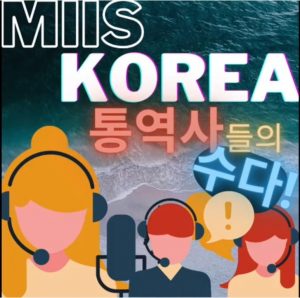WIPO Translation 101
WIPO Translation 101
Not that our everyday classes are any less special or enjoyable, I find guest lectures arranged by our program’s faculty particularly memorable. Today I’d like to share some key takeaways from the April 11th special lecture by Su Park (MIIS Korea Program, Class of 2012), during which she shared some personal experiences and insights as a former Korean translator at WIPO.
Why WIPO?
Upon graduation, Su began her career as a translator at WIPO—first as a fellow, then as an in-house translator. Su is now a freelancer, but she had many positive things to say about her time at WIPO.
Su noted that WIPO is a great place to learn, with a friendly team willing to mentor and train you along the way. There are about 14 staff in WIPO’s Asia Group, all of whom are friendly and contribute to a relaxed and collaborative work culture. She also pointed out that Geneva is a great place to live and serves as a superb base for travel.
Intellectual property? No expert knowledge, no worries.
Majority of WIPO translation consists of translating abstracts. Though no more than a paragraph of 200 or so words, translating WIPO abstracts can be quite challenging for several reasons, including lack of familiarity with content, particular style of abstract writing, and linguistic differences in Korean and English. But not to worry, says Su—WIPO translators have many tools at their disposal.
By tools, I mean the many clues within the source text itself that can help during translation. Such tools include understanding the abstract’s structure as well as maximizing the use of punctuation, diagrams, and key words, as applicable.
But Su also emphasized the importance of research in the translation process, noting that she refers to variety of material online—from databases to dictionaries, to search for that fitting term or the right meaning of Chinese-rooted words. Su also shared that she consults colleagues for their thoughts when needed.
Because there’s so little interaction with the abstract writers themselves, perhaps it’s fair to say that becoming an expert at leveraging such tools holds the key to success, even more so than having expert content knowledge. After all, there just will be no end to the variety of content translated at WIPO. But as with other translation work, keen analytical skills are also a must.
Priorities
Su highlighted that when it comes to WIPO translation, clarity trumps all else, even at the cost of style and faithfulness to source text.
No pronouns are allowed in WIPO abstracts, so be ready to sacrifice style, she says.
And prioritizing clarity over faithfulness becomes particularly important because of the linguistic differences in Korean and English. From clarifying the subject or plurality of a word, to avoiding repetition of certain words, the abilities to discern and prioritize prove essential when translating Korean abstracts.
Oh, and why there’s hope.
With only two positions for Korean translators, the opportunity to work at WIPO frankly does not come all that readily. But it’s still good to know that alumni of our program are sought out by WIPO, time after time.
And there’s many opportunities to learn more about WIPO at MIIS, whether through career fairs, info-sessions, or alumni connections.
But above all, I sense that our program, with all its rigor, is preparing us well to handle the kind of challenges Su elaborated about. As a first year, I can’t say I know all about the world of Korean<>English translation. But even from the bits I’ve learned so far, I realize that what we’re wrestling with time and again at home, practice rooms, and classrooms are challenges professionals like Su also face out in the market. It’s just that like them, we too will one day find such challenges more manageable and less daunting–or so I hope.






혹시 박선생님의 이메일 주소를 따로 알 수 있을까요? 해당 WIPO 프로그램 관련해 몇 가지 질문을 드리고 싶습니다!
안녕하세요, 제가 한번 알아본 후 메일 주소 공유가 가능하면 연락 드리겠습니다. 감사합니다.
감사합니다! 🙂
혹시 확인 후 공유가 가능하시면 2_ys2@naver.com 이 메일 주소로 연락 주시면 정말 감사드리겠습니다! 🙂